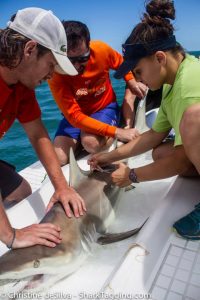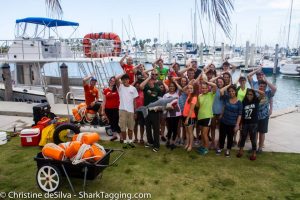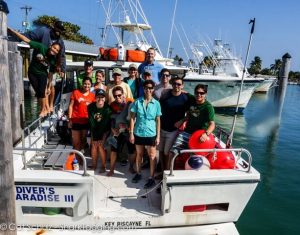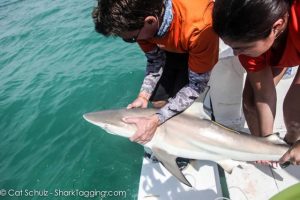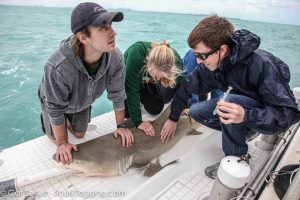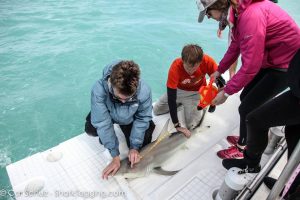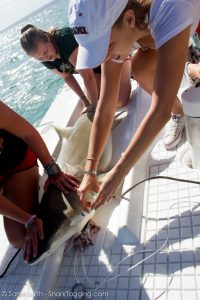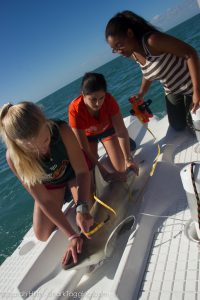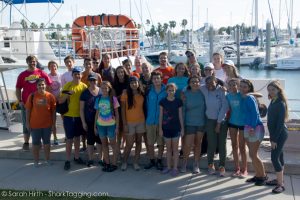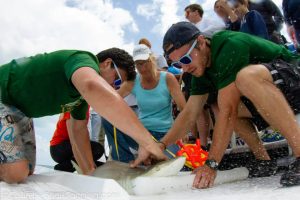Shark Tagging with Trinity Prep
by Pat “Banana” Goebel, RJD student
When I woke up on Saturday morning, I was really excited to be going shark tagging. I couldn’t wait to go on a trip with Trinity Prep as their students are always engaged and willing to help. I snagged everything I needed for the day and headed down to Miami. Little did I know I would be returning from this trip with the nickname “banana.”
The team arrived at Diver’s Paradise at 8 am to load the fishing gear onto the boat. After a few sips of coffee, everyone was ready for an excellent day on the water. The students from Trinity Prep and a couple citizen scientists arrived around 9 am and couldn’t wait to get on the boat and go shark tagging with us. Captain Eric gave a safety briefing followed by David, who gave a detailed explanation of our fishing methods, which is designed to reduce fishing stress.
On the way out to our fishing spot, the team prepped the rest of our gear and cut fresh bait. Once we arrived at our fishing spot, the group came to the back of the boat to see how we deploy the lines. Then they helped us deploy the rest of the first set of ten lines.
After an hour soak time, we headed back to our first drumline. The first set of ten lines had no sharks. On the second set we got a small nurse shark. The third set resulted in one blacktip and one nurse shark that got away.
Now, this is where the story gets interesting! Many fisherman and captains believe bananas are bad mojo on a fishing on boat. Why? Because fisherman and captains are very superstitious, however, I am not. There are many theories on why people believe bananas are bad luck but I won’t go into that. After 35 lines, someone noticed I had banana. Captain Eric and basically everyone else on the boat demanded that I get rid of it. But, it was a good banana and I didn’t want to toss it away. So, I was forced to eat the banana even though I wasn’t hungry!
Before the consumption of the banana, we were having a normal day (3-4 sharks). After the banana was disposed of (but was it really if it was in my stomach), we went from an average to well beyond average day. We doubled our catch for the day in five lines. Yep! We went 3 for 5 once the banana was gone. The second line had a blacktip, the fourth line had a large nurse, and the final line of the day had a large bull shark.
I remember thinking to myself, “wow! Did that really just happen? I am never going to hear the end of this one.” So, as you can imagine all the blame was put on me. My name quickly changed from Pat to Banana. But, it didn’t stop there. After the trip, Captain Eric graciously bought me banana suit to wear on the next trip.
The trip on April 11th will likely be a trip none of us will forget. The students from Trinity Prep were a great help and showed a passion for our research. We left them with a plethora of new knowledge about the importance of the ocean, which hopefully they will share with others. Sharing our knowledge about ocean conservation is truly a remarkable experience. Thanks to all who participated.
P.s. I bring a banana on every trip…


